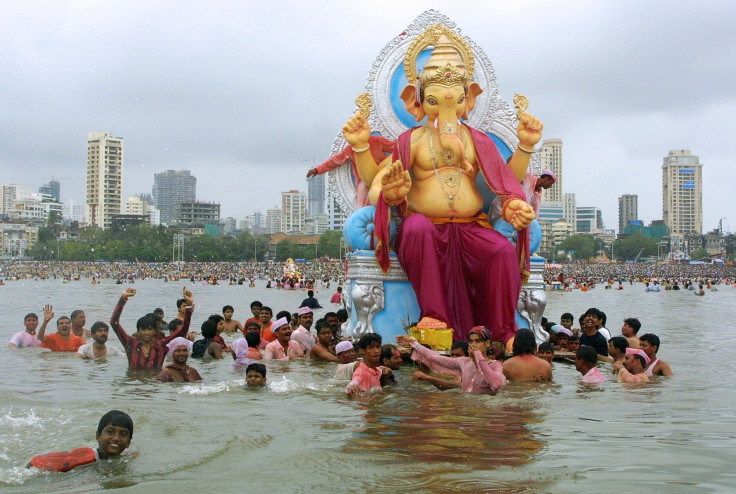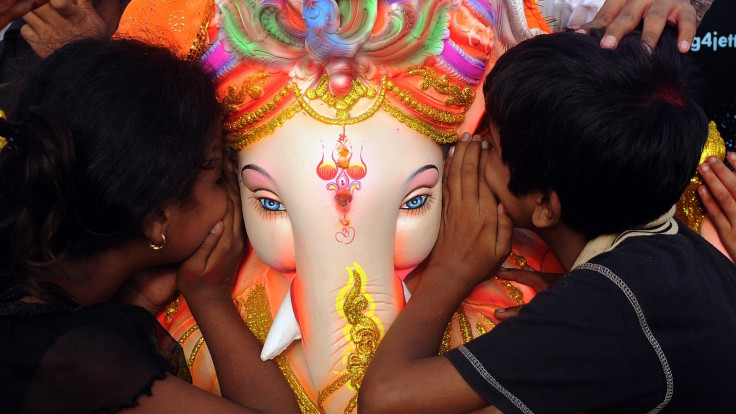Ganesh Chaturthi 2017: Legends and traditions of the Hindu festival celebrating the elephant-headed god
The festival, one of the biggest in India, is marked to celebrate the birth of the god Ganapati - the remover of obstacles.

All across India and other parts of the world, Hindus gear up to celebrate Ganesh Chaturthi – a festival to mark the birthday of one of the religion's most popular deities – Ganesha (Ganapati). Part of a ten-day celebration, the main festival day is selected based on the Hindu Luni-solar calendar and this year it falls on 25 August.
Ganesh, the son of Lord Shiva and Parvati, is known as the remover of obstacles and the god of new beginnings. He is best recognised for having an elephant head — the rest of his body is that of a man, most often depicted with four arms.
Typically, Ganesh Chaturthi is marked with the arrival of the deity in the form of an idol, most popularly made of clay. Families get smaller figurines for their homes while larger neighbourhoods create larger-than-life statues, often as tall as multiple-storey buildings.
Over the 10 days, prayer services are conducted following which the idols are taken in a procession to be submerged in nearby water bodies.
The festival, while marked across India, is celebrated with large scale pomp and grandeur in the states of Maharashtra, Gujarat, Karnataka, Telangana and Andhra Pradesh where streets are festooned with flowers and lights and speakers blare music and holy songs through most of the day and night.
Who is Lord Ganesha?
The son of Lord Shiva and Goddess Parvati, Ganesha is known as the lord of new beginnings, remover of obstacles, the patron of arts and sciences and the deva of intellect and wisdom.
According to legend, while having a bath, Goddess Parvati created a figure of a boy from the dough and instilled it with life. She instructed him to stand by the door of the house and keep a watch. However, when her husband Shiva was stopped by the boy, he got angry and cut off his head.
On seeing her creation dead, she ordered her husband to bring him back to life or she would destroy the world. Shiva along with fellow deity Lord Vishnu visited Earth where they fixed an elephant's head to the body of the boy and brought him back to life.
As a form of reconciliation, Shiva apologised and declared that Lord Ganesha would be forever more worshipped as a god.

Ganesh Chaturthi traditions
The festival celebrations begin with the arrival of the idol of Ganesha which is decorated with flowers and lamps. Prayer ceremonies take place and on the final day, it is taken and immersed in the nearby sea, rivers, lakes or ponds. Music and chanting accompany the idol and streets are cleared of traffic to make way for the processions.
Typically, Hindus refrain from eating non-vegetarian food during this auspicious time and a variety of sweets are prepared to be distributed among friends and family. Modak – a sweet dumpling stuffed with coconut, jaggery and dry fruits is made in most homes along with karanji, a similar type of crescent-shaped deep-fried sweet which is more popular in South India.
Threats to the environment
Over the past decades, idols were being made with plaster of paris, which was easier to come by than clay. The problem with the material was that when the idols were immersed in the water, they ended up contaminating it and killing much of the marine life in the region.
However, in recent years, environmental groups have encouraged the sale of idols made from alternative materials and urged devotees to submerge the smaller figures in tubs of water rather than natural bodies.
© Copyright IBTimes 2025. All rights reserved.






















